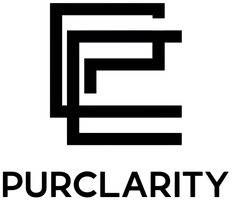What to do with blackheads that won’t go away?

Blackhead Basics

Let’s start with the basics: what are blackheads? We’re all familiar with the term, but with all the misinformation floating around online about skin care and skin conditions, it’s always a good idea to check out the facts. Here’s what you need to know:
- Blackheads are a mild form of acne vulgaris. (That’s the same type of acne that causes pimples and cystic acne).
- Blackheads form in hair follicles and sebaceous glands, most commonly on the face, but they can appear anywhere on the body where these glands are present.
- Oil from the sebaceous gland (sebum) and dead skin cells from the surface of the skin mix to clog the hair follicle, the result is an inflamed bump called a comedo (plural: comedones).
- Open comedones (clogged hair follicles) react with the air and turn black, creating a blackhead. When comedones close over, they form whiteheads.
Okay, sounds simple enough: clogged hair follicles! But learning what a blackhead is doesn’t solve the problem, and it might lead you to ask the the question: Why me? There isn’t a single answer to that question, which is good news and bad news. The bad news is that some factors that contribute to blackheads can be harder to control than others, but the good news is that if you’ve been trying to treat your blackheads by addressing just one factor, there might be other steps you can take. Let’s take a look at what causes blackheads and you’ll be one step closer to figuring it out:
- Overproduction of sebum related to natural hormonal shifts (puberty, mentrusation, pregnancy).
- Overproduction of sebum related to medication-induced hormonal shifts (birth control, corticosteroids, androgens, lithium, etc.).
- Overproduction of sebum related to genetic factors (a naturally oily skin type).
- Slow shedding of the skin/buildup of dead skin cells.
- Irritation of hair follicles, usually from hair removal.
- Significant presence of Propionibacterium acnes bacteria on the surface of the skin.
Blackheads vs. Pores

Hopefully you’re getting a better understanding of the reasons you’re still struggling with blackheads, and you might even have an idea of some underlying causes to look into. There’s just one question left to clear up before diving into treatment options: What’s the difference between a blackhead and a pore? It may seem obvious, but recognizing a blackhead isn’t as straightforward as you might think. Particularly in our world of flawless, instagram-filtered complexions, figuring out the difference between a blackhead and normal skin texture created by pores isn’t always easy.
The tiny openings around your hair follicles and sebaceous glands are what we refer to as pores. Part of the pore’s structure are sebaceous filaments, which serve to regulate the amount of sebum (oil) in the pore. Sebaceous filaments are tiny and may be invisible, but if the pores contain larger amounts of sebum it’s sometimes possible to see them. This typically appears as “enlarged pores.” Unlike blackheads, they are lighter in color and do not create a raised bump. It’s important to remember that visible sebaceous filaments (enlarged pores) serve an essential function and are a sign of healthy pores— don’t try to get rid of them! Blackheads form when the pore is clogged, and filaments help prevent that.
Treating Blackheads

Despite the fairly simple reasons behind blackhead breakouts, treating them successfully isn’t always easy. The goal of most blackhead treatments is focused on increasing the turnover of skin cells and killing the bacteria that causes acne. Here are some of the most popular treatments for blackheads available without a prescription:
- AHAs and BHAs (Alpha hydroxy acids and beta hydroxy acids): Considered a first-line treatment for blackheads, this is a group of acids used to exfoliate the skin. The most commonly recommended acid is salicylic acid, a BHA available in a wide range of product formulations. Depending on your skin type, you may tolerate some acids (or methods of application) better than others. The goal of all AHAs and BHAs is to help remove the dead skin cells that clog the hair follicle and lead to blackheads. Acids can be irritating if used improperly or on sensitive skin— sun protection is necessary while using these products.
- Benzoyl Peroxide: This treatment targets acne-causing bacteria, and is typically recommended for pimples and cystic breakouts, but if your blackheads are part of a larger acne issue benzoyl peroxide still might be an appropriate treatment. This product can be very drying and also requires sun protection.
- Retinoids: Once only available by prescription, many retinoids are now available over-the-counter. They work by speeding up skin cell turnover, which prevents clogged follicles. Even retinoids available at the drugstore can cause significant irritation and need to be introduced slowly. Sun protection is essential.
- Hypochlorous Acid: A newer option for blackhead treatment (though it’s been around forever in surgery and wound care settings) is hypochlorous acid. It works by killing acne-causing bacteria while simultaneously soothing skin and reducing inflammation. If exfoliants alone aren’t eliminating your blackheads, or are creating too much skin sensitivity, a hypochlorous acid product (like this one by Purclarity Skincare) is your best bet.
If you have a particularly stubborn case, seeing a dermatologist or medical esthetician for a personalized treatment plan could be necessary. Here are the treatment options for blackheads available only through a medical or skincare professional:
- Prescription-strength Retinoids: A more concentrated retinoid can be more effective (if used properly) but increased skin sensitivity is likely. Make sure to use sun protection and to incorporate other products into your routine that help combat irritation.
- Extractions: A medical esthetician may sometimes perform extractions (never attempt at-home extractions, which can lead to infection and scarring!) but this is temporary solution. If you have extractions performed, applying a hydochlorous acid spray like Purclarity Skincare’s Revitalizing Skin Mist post-procedure will help eliminate redness and swelling and prevent infection.
- Chemical Peels: A very aggressive form of exfoliation, only a qualified dermatologist should perform this procedure.
- Lasers: If your blackheads aren’t responding well to exfoliating treatments, your dermatologist might recommend a laser, which directly targets the follicle and helps reduce oil production.
Maintaining Clear Skin

No matter which treatment works best to clear your blackheads, shedding dead skin cells and producing sebum are a normal part of how our skin stays healthy. You’ll need to find a maintenance routine to prevent a recurring issue. To banish blackheads for good, make sure you’re keeping up with these preventative steps even after your breakout clears:
- Skin hygiene: Wash your face twice daily with an appropriate cleanser.
- Regular exfoliation: Continue using whatever exfoliation method (AHA/BHAs, retinoids, etc) is working for you, but consider reducing the frequency to maintain a healthy skin barrier.
- Hypochlorous Acid: Keep acne-causing bacteria under control without excessive drying or irritation by regular application of a hypochlorous acid spray like Purclarity Skincare’s Revitalizing Skin Mist.
- Healthy Habits: Be mindful of diet, exercise, sleep, and stress. It makes a difference!
With the right products and a little consistency, struggling with blackheads will be a distant memory. Just don’t forget— pores are normal, so put down the magnifying mirror and enjoy your healthy, clear skin!









